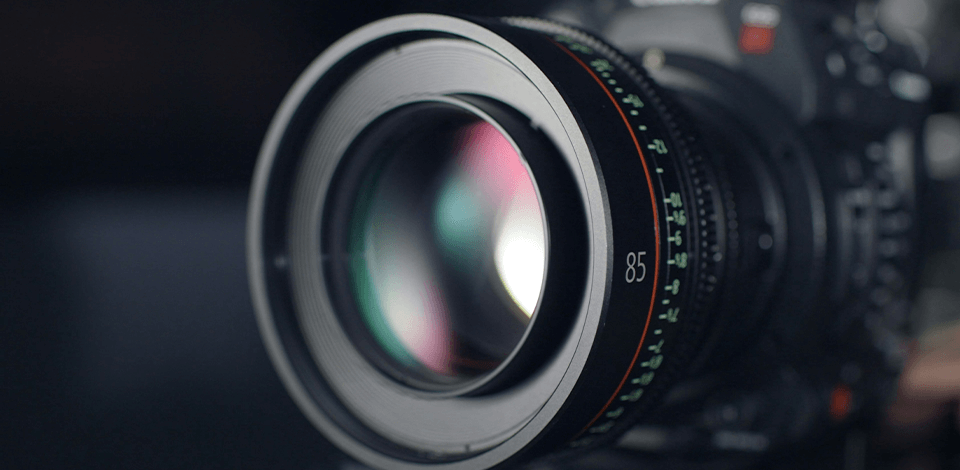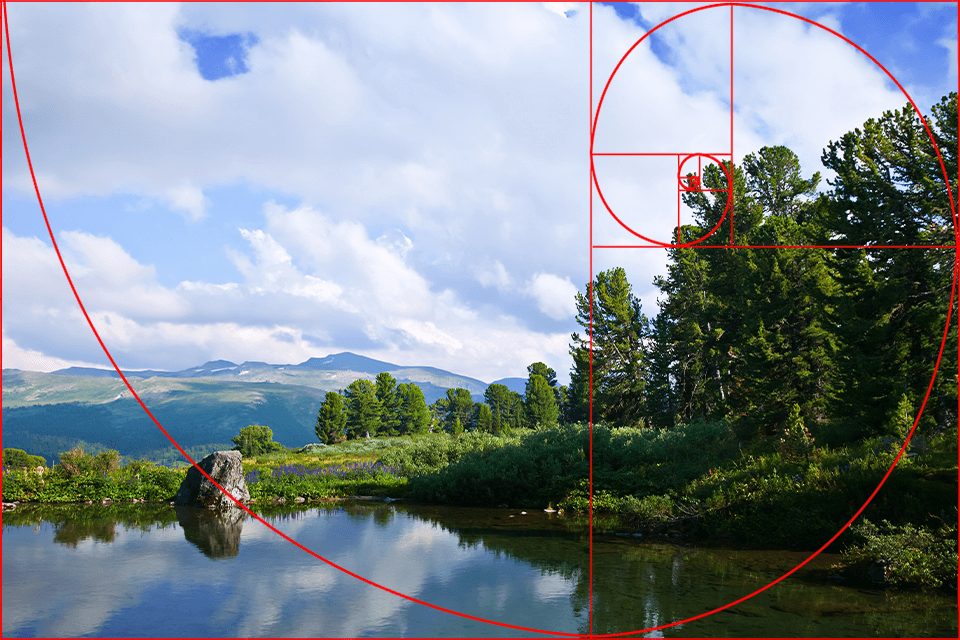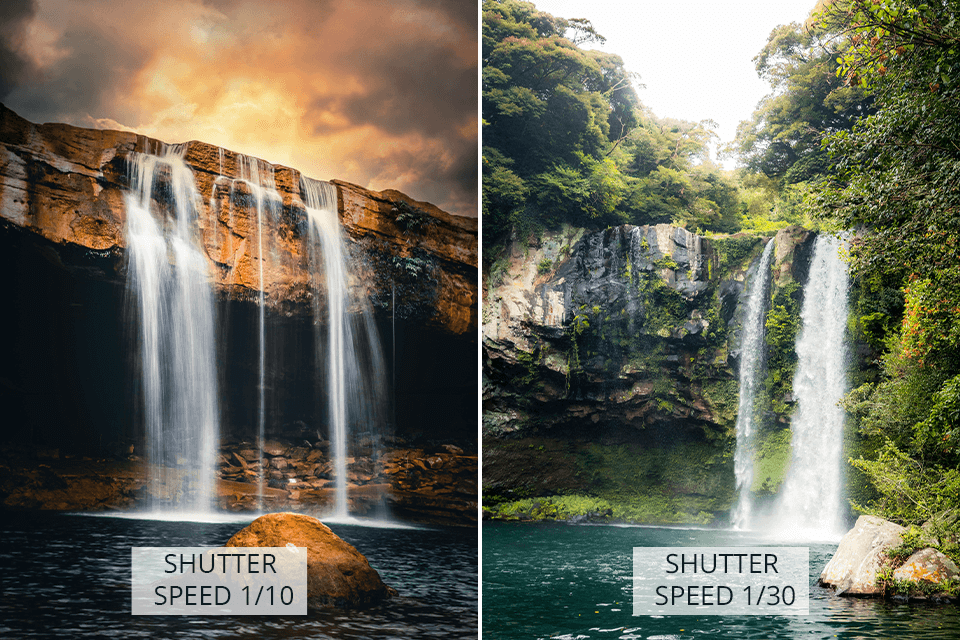
Although we usually think of math as a complicated subject taught in high school, its applications in the real world are limitless. But in this article, I’ll delve into the following question - how is math used in photography and how do I use it?
Calculations are an indispensable part of configuring camera settings such as shutter speed, aperture, and focal length. The rule of thirds is also a mathematical element used to create perfect proportions of a photographic composition.
Without mathematics, achieving a well-balanced and proportional photography composition would be a real brain teaser for photographers.

Golden ratio
When it comes to composition, the golden ratio is probably one of the most important mathematical concepts. It equals approximately 1.618. Many cameras use this aspect to build their grids used to position key elements so that the composition looks visually pleasing,
Rule of thirds
Rule of Thirds in photography is a compositional technique that breaks an image down into thirds through horizontal and vertical lines. Each intersection of these lines is called a “power point”. To make the composition look perfect, a photographer should place key elements along these lines.
Fibonacci spiral
The Fibonacci sequence or spiral, related to the golden ratio, is a compositional guide used to build a spiral pattern for positioning points of interest when you are composing an image. Such a spiral is often found in natural elements and man-made pieces of art and is regarded to be attractive.
Aspect ratio and framing
Understanding aspect ratio, which is expressed like this 4:3, 3:2, 16:9, can really help photographers frame images for their intended use. These ratios let a photographer choose the ideal framing for their subject in both a standard ratio or a panoramic view.
Leading lines
Lines serve as red flags showing viewers where they should focus their attention. All these angles and intersections are geometrical concepts, understanding which is a necessity for a photographer. Knowing how to operate these concepts allows for creating a sense of depth and improves the overall composition.
Angles and perspective
Math is used in photography to choose appropriate shooting angles and perspectives. It depends on an angle whether a composition will be dynamic or not. Understanding how these lines are important for shooting amazing pics will let photographers become more professional.
ISO in photography is crucial for achieving proper photo exposure. This value defines how much graininess there will be in a photo.

ISO shows how sensitive a camera to the light is. A high ISO setting means that the camera can let much light in, and vice versa. The most common values are the following:
ISO 100, 200, 400, 800, 1600…
The pattern you see above is known in Math as the geometric progression, which is a sequence of numbers that differ from each other by a common ratio. The pattern is based on the so-called base ISO, which is actually the lowest sensitivity of the camera.
As you already know the basic principles of ISO settings, you are probably ready to learn more complex stuff. The aperture settings are probably a stumbling block for every novice photographer. As a rule, they think that the higher aperture number means the larger aperture opening, but things actually work oppositely.
The letter ‘f’ next to each number, which appears after each number, is confusing as well. Actually, this means F-Stop, and each number put after this letter is known as an ‘F-Stop number.’ Here are several examples:
f/1.4, f/2, f/2.8, f/4, f/6, f/8…
Analyze this pattern and you’ll notice a doubling of the aperture number like f/1.4 - f/2 - f/2.8etc. with every second value. The higher this number is the narrower the aperture will be. The lowest number (f/1.4 in our case) means that the aperture achieved its maximum opening and lets the maximum amount of light in.
As for the pattern used to describe the sequence of F-Stop numbers, it can be also called a geometric progression. The f values depend on the diameter of the aperture opening. In our example, the base f-number is f/1.4, which is actually the square root of 2.
The shutter speed is another important camera setting that together with ISO and aperture forms a so-called Exposure Triangle. The measurement of these values is either seconds or a fraction of seconds. It shows how long the camera's shutter remains open after you press the button to take a photo.

A low shutter speed means that the shutter opens and closes at a slow rate letting more light hit the camera sensor. The most common shutter speeds are the following:
1, 1/2, 1/4, 1,8, 1/15, …1/1000, 1/2000, 1/5000
As you can see, in this case, we have a geometric progression as well, as to form each next value, the previous one is doubled. We have the base of 1, and then 1/2, immediately doubled to 1/4.
However, there are also some exceptions, as 1/8 isn’t exactly doubled and is followed by 1/15. This is not a mistake and is done intentionally, as 1/16 is not as easy to double as 1/15 (1/30).
Photographers group shutter speeds into the following categories: SLOW (1 to 1/30 sec), MEDIUM (1/60 to 1/250), which is ideal for everyday use, and FAST (from 1/500 to 1/5000) to freeze motion.
White balance is all about color temperature, expressed in Kelvins (K). Mathematical calculations are used to define the color temperate with the help of a specific temperature scale for defining warm and cool colors.

Lower Kelvin temperatures emit warmer light while higher Kelvin temperatures emit cooler light. Generally, the color temperature of the sky is 10000 to 15000 K, and the color temperature during the day is somewhere between 5500 and 6500 K. Compare it with candle flame (1000 to 2000 K) and you will be stunned by the difference.
Fortunately, the photographers do not need to adjust these numbers to get the required color temperature, as there are preconfigured ‘Fluorescent, Cloudy, Incandescent, etc.’ modes that they can take advantage of. Your only task is to choose the one that perfectly matches the environment and lighting conditions. In addition, you can tweak white balance in Photoshop.
Correcting lens optics and distortions is closely connected with Mathematics as well. In photography, there are several lens distortion types like barrel distortion (straight lines curving outward) and pincushion distortion (straight lines curving inward).
Distortion coefficients are numbers that indicate the amount and type of distortion the lens is capable of. These numerical values are used in mathematical models to adjust distortions at the post-editing stage.
To calibrate a lens, one should also know the distortion characteristics of the particular lens. Performing this also requires shooting pics of some basic geometric patterns or special calibration charts. Then one should know Math to calculate the distortion coefficients.